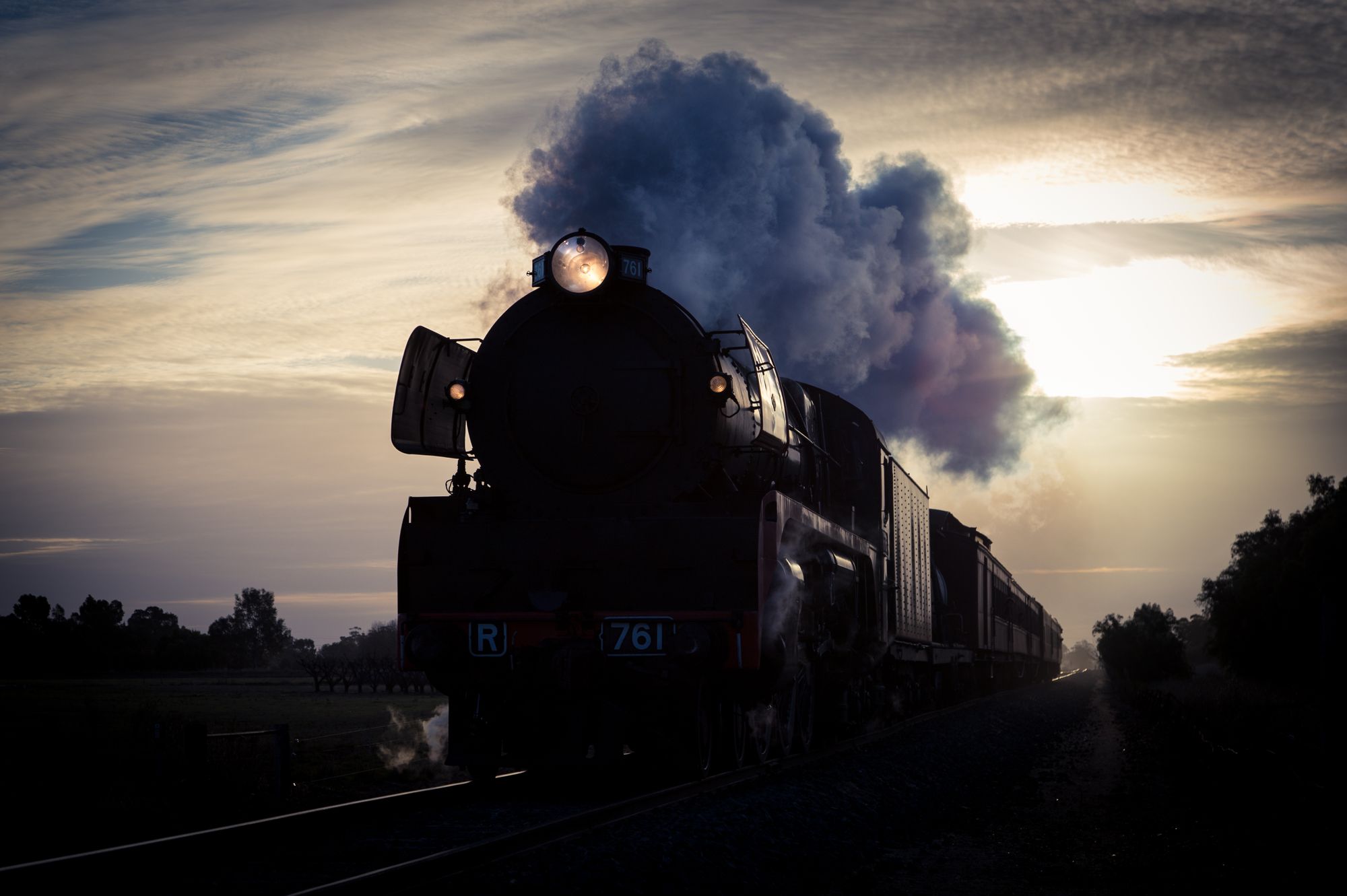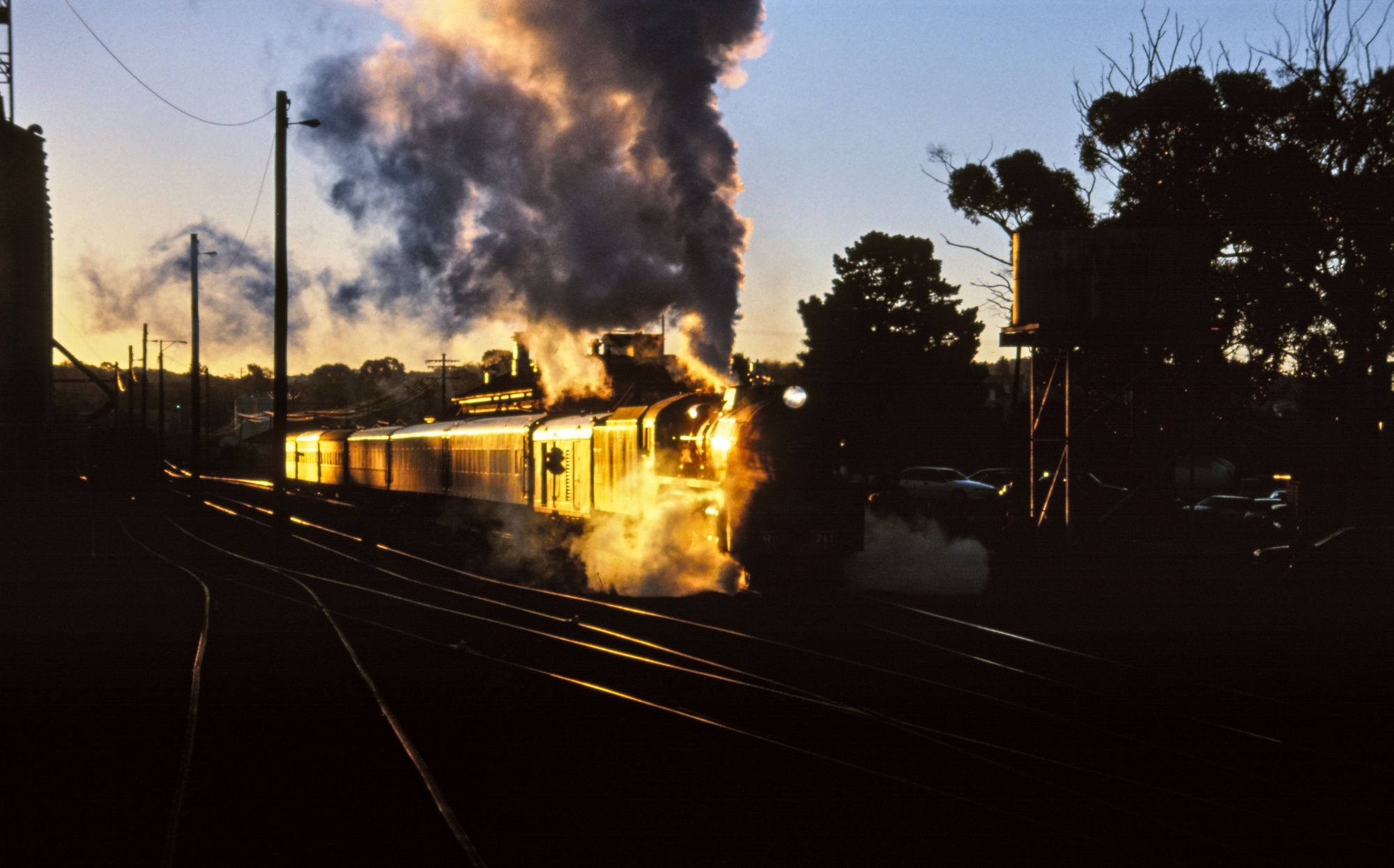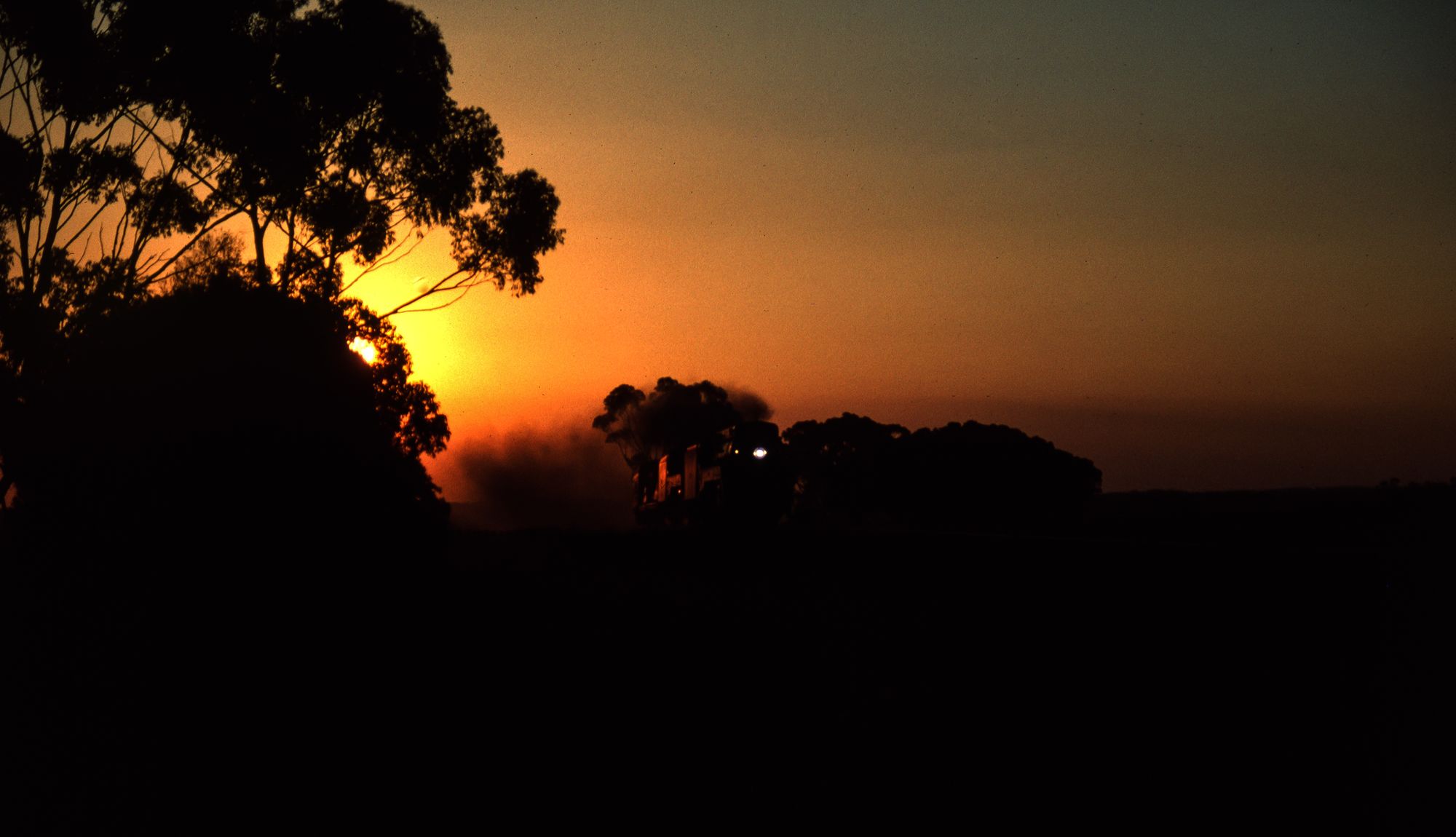A look into my photographic process, starting with natural lighting.
This is a rehash of my presentation at the Railway Photography Forum at the Powerhouse Museum, back in 2018.
The evolution of cameras and lighting over the last decade has given us new opportunities to take photos. Where previously we may head for home as soon as the sun dips below the horizon, the improved light sensitivity in modern SLRs and the affordability of off-camera lighting means, with a bit of practice and planning, we can now commit to image scenes that otherwise would be lost.
It’s only in the last five years that my passion for night photography has really taken off. Since moving close to Puffing Billy I’ve taken advantage of the regular night trains to develop my skills. While you might not be lucky enough to have a preserved railway in your backyard, I encourage you all to go out and practice wherever possible. After all, digital photos are cheap – just the cost of a battery charge – so there’s no harm in trying!
Natural Lighting #
Let’s kick off with natural lighting. This can be anything from sunset and sunrise, to a full moon at midnight: if the lighting works, let’s try to use it.

1/500s | f/6.3 | ISO 100
For this shot I was perfectly happy to sacrifice detail in the locomotive, as I knew the backlit smoke effects coupled with the streaky sky would deliver a dramatic image.
There are many reasons why I chose this photo to share, but my main reason was to demonstrate to you how different lighting conditions can dramatically alter a photo. In this example, the flare from the setting sun has cast some purple hues in the smoke erupting from the chimney. Further down the track the rails are picked out before disappearing into a haze, and the intricate patterns in the clouds are highlighted by the diffused sun.

In a scene like this it can be easy for the auto-focus system on your camera to hunt for a focal point, often leading to out-of-focus pictures.
A trick I like to use is selecting an autofocus point on my camera and training it on the headlight; the smokebox is often where the eye is naturally drawn to.
Glint shots such as this are a personal favourite of mine: they tend to hide the some of the distractions in a scene while simultaneously picking out other parts of interest. Picture this as a midday shot with high sun: the smoke would still make for an interesting sight but, for me at least, it would lose some of its magic.

This shot was taken early evening in April 2000, after 3801 and 3830 became locked at Dimboola following an overnight derailment. I knew that the setting sun would dominate the photo, so I was able so shift my composition just enough to hide it behind the trees.
In a scene like this it’s tempting to go for a tighter crop. I chose to go for a wider frame here to help depict the vastness of the landscape these two locos were travelling through. Also, with a sky like that, why would you want to crop it out?
These last two photos were taken on Kodachrome film and scanned on a Plustek Opticfilm slide scanner.

Making use of the full moon, I took this long exposure of 12A leaving Menzies Creek one night on a dinner train. It’s not one of my favourite photos, but I’ve included it tonight to demonstrate the stunning effect a full moon can have on the sky in a night photo. For reference, this was taken at 7:30 pm on an April night – well after the sun had set.

Right on the edge of nightfall, the golden hour can deliver some amazing colours and contrasts in light. If you’ve been predominantly a ¾ sun shooter and you want to branch out into something different, scenes like this are perfect ways to practice.
I’ve included this shot because of the unique lighting effects at Ballarat station; the arching roof frames the shot and focuses the eye down. The sunlight picks out various details amongst the shot; the tactile platform dots, the escaping steam, and the tops of the rails. Interestingly the marker lights on the locomotive are lit up, which helps to balance out the otherwise completely silhouetted smokebox. Possibly my favourite part of this photo is where the sunlight bursts through the cab window and highlights the boiler.
Stick around for parts 2, 3, 4 and 5!
Thanks to Alan Shaw for the photo of me mid-presentation.
